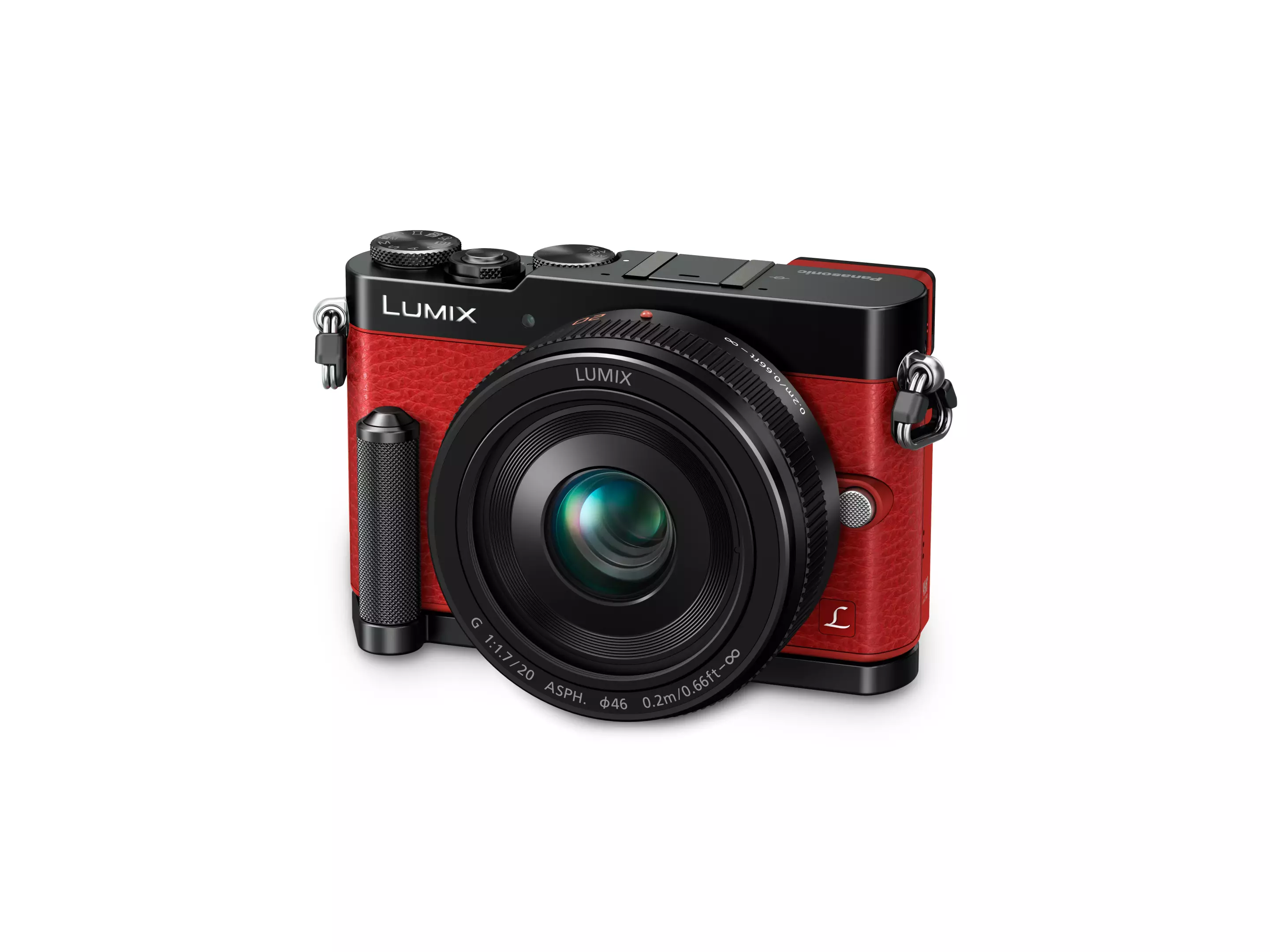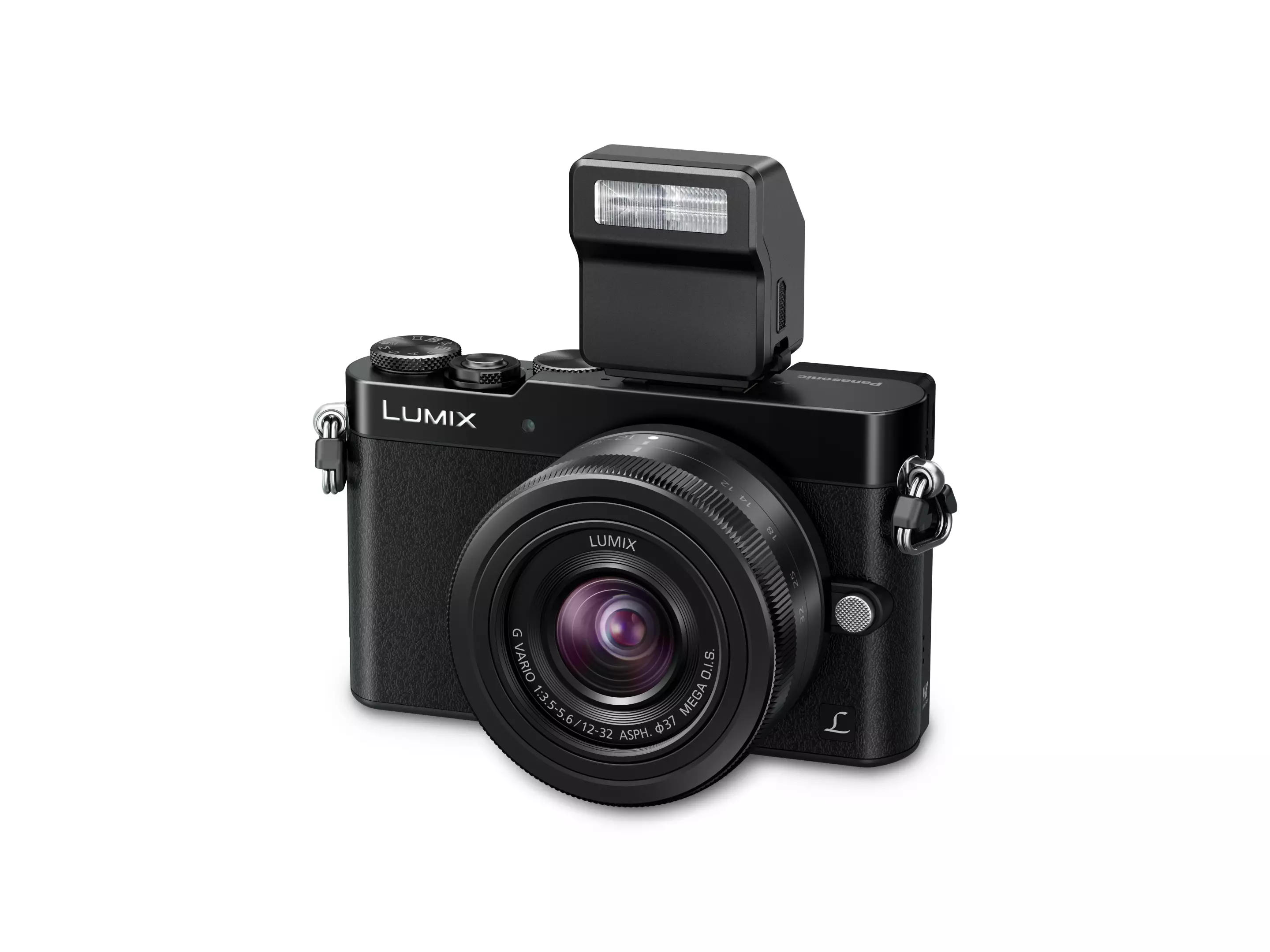Panasonic is running with the idea of small devices with big sensors at Photokina this year. The firm has revealed a trio of Lumix devices including the CM1, an Android smartphone/camera hybrid with a one-inch type camera sensor, and the smaller-than-average GM5 mirrorless shooter. Also outed was the compact LX100, which boasts a large 4/3-inch sensor.
Panasonic Lumix DMC-CM1

If it lives up to its specifications, the Lumix CM1 could be the best smartphone camera we've ever seen. It's slim and pocketable for a camera (though arguably quite chunky for a phone) and contains a 20-megapixel one-inch type MOS sensor. That's the same size as used in premium compact cameras like the Sony RX100 M3, and massive compared to those in smartphones, meaning it should deliver the photographic goods.
The sensor is paired with a Venus image processing engine like those on Panasonic's higher-end cameras, and means the CM1 will be able to produce images to rival compact and mirrorless cameras, even in lower-light conditions. On the front of the smart camera is a Leica Elmarit F2.8 lens which offers a 28-mm equivalent focal length.
Other camera-centric features on the Lumix CM1 include a shutter release button and a lens ring which can be used to control settings such as aperture, shutter speed and focus. Photographers will have access to full manual controls and can shoot RAW files as well as JPEGs. The CM1 can also record 4K video at 3840 x 2160 pixels and takes microSD cards up to 128 GB.

On the rear of the camera, or the front of the phone, there's a large Full HD 1,920 x 1080 pixel 4.7-inch touchscreen. The Lumix CM1 runs Android 4.4 (KitKat) and features 2 GB RAM along with a 2.3 GHz quad-core processor. There's 16 GB of internal storage and LTE, 3G, GSM, Wi-Fi, NFC connectivity. This obviously means that the CM1 can be used for sharing your images and videos wherever you are, and that it can run most Android apps.
Unfortunately, it looks like France and Germany are going to be the only countries to get the CM1 for now. It's due to go on sale there for €900 (around US$1,150) later this year.
Panasonic Lumix DMC-GM5

The GM5 is a little bit bigger than the teeny-tiny GM1 which was released last year. That's because the new mirrorless camera, which will go on sale alongside the GM1, boasts a number of additional features, including a built-in electronic viewfinder and better physical controls.
Inside the interchangeable lens shooter there's a 16-megapixel Micro Four Thirds (17.3 x 13 mm) Live MOS sensor. This is paired with a Venus Engine image processor to produce DSLR-rivaling images with low noise levels. The GM5 has an ISO range of 200 to 25,600, burst speed shooting of up to 5.8 fps, and can record Full HD 1080p video at 60/50 fps.
But it's the addition of an electronic viewfinder which is going to make the GM5 stand out amongst other small mirorrless cameras. The 1,166K dot EVF gives users an alternative to composing shots on the three-inch TFT LCD touchscreen on the rear with 921K dots. Built-in Wi-Fi is on hand, and with the Panasonic Image App for iOS and Android remote shooting and wireless image sharing is possible.
The stylish camera uses a magnesium alloy chassis and features aluminum dials for physical access to modes and autofocus controls. There's also a control dial on the rear which makes changing settings easier than using the touchscreen to dive into menus. The GM5 measures 98.5 x 59.5 x 36.1 mm (3.88 x 2.34 x 1.42 in) and weighs 211 g (7.4 oz). It features a Micro Four Thirds mount meaning there are a number of compatible lenses available.
The Panasonic Lumix DMC-GM5 will be available in red or black and will go on sale in November for $900 bundled with a 12-32-mm kit lens.
Panasonic Lumix DMC-LX100

The Panasonic LX100 is a compact camera designed for enthusiast photographers who want to travel light but retain physical manual controls and image quality. While it might not be as compact as the likes of the Sony RX100 M3, the LX100 features a considerably bigger 4/3-inch type 12.8-megapixel MOS sensor. That's more than five times larger than the sensor in the Panasonic Lumix LX7.
This is paired with a newly developed Venus Engine image processor which features a quad-core CPU. As a result, the camera has an ISO range of 200 to 25,600 and a burst shooting speed of 11 fps. It can also shoot 4K video 3840 x 2160 at 30/25 fps. The built-in Leica zoom lens gives an 24-75mm equivalent, and has a variable maximum aperture of F1.7-F2.8
The size of the camera, 114.8 x 66.2 x 55 mm (4.5 x 2.6 x 2.2 in), means Panasonic has been able to include a number of physical controls. There's dedicated aperture and focus rings, along with shutter speed and exposure compensation dials. The LX100 weighs 393 g (13.9 oz) and on the rear of the camera is an electronic viewfinder with a 2,764K dot resolution and a three-inch LCD with 921K dots. Built-in Wi-Fi is there to make it easy to share images.
The Panasonic Lumix DMC-LX100 will go on sale in November for $900, and will be available in black or silver.
Product pages: Panasonic Lumix CM1, Lumix GM5, Lumix LX100




























